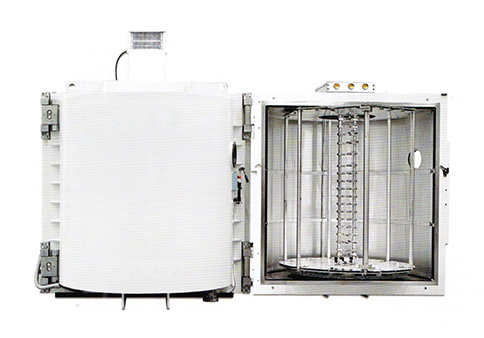 English
English-
 English
English -
 Español
Español -
 Português
Português -
 русский
русский -
 Français
Français -
 日本語
日本語 -
 Deutsch
Deutsch -
 tiếng Việt
tiếng Việt -
 Italiano
Italiano -
 Nederlands
Nederlands -
 ภาษาไทย
ภาษาไทย -
 Polski
Polski -
 한국어
한국어 -
 Svenska
Svenska -
 magyar
magyar -
 Malay
Malay -
 বাংলা ভাষার
বাংলা ভাষার -
 Dansk
Dansk -
 Suomi
Suomi -
 हिन्दी
हिन्दी -
 Pilipino
Pilipino -
 Türkçe
Türkçe -
 Gaeilge
Gaeilge -
 العربية
العربية -
 Indonesia
Indonesia -
 Norsk
Norsk -
 تمل
تمل -
 český
český -
 ελληνικά
ελληνικά -
 український
український -
 Javanese
Javanese -
 فارسی
فارسی -
 தமிழ்
தமிழ் -
 తెలుగు
తెలుగు -
 नेपाली
नेपाली -
 Burmese
Burmese -
 български
български -
 ລາວ
ລາວ -
 Latine
Latine -
 Қазақша
Қазақша -
 Euskal
Euskal -
 Azərbaycan
Azərbaycan -
 Slovenský jazyk
Slovenský jazyk -
 Македонски
Македонски -
 Lietuvos
Lietuvos -
 Eesti Keel
Eesti Keel -
 Română
Română -
 Slovenski
Slovenski -
 मराठी
मराठी -
 Srpski језик
Srpski језик
Optical vacuum coating machine coating technology
2022-06-14
Optical vacuum coating machines are widely used in the industry, such as mobile phone cameras, mobile phone cases, mobile phone screens, color filters, spectacle lenses, etc. The precision standard is very high, and various coatings can be coated, such as AR anti-reflection film, decorative art Plastic films, motor ceramic films, improved reflective films, ITO conductive films, and anti-fouling films have a high percentage of sales in the market.
What processing technology does the optical vacuum coating machine use to coat so many layers?
When the optical vacuum coating machine volatilizes and accumulates, the source raw materials in the vacuum system are heated or ion beam negative electrons to volatilize. Vapor is suspected to be on the optical surface. During the volatilization period, according to the precise manipulation of heating, the working pressure of the vacuum pump, and the precise positioning and rotation of the substrate, a uniform optical coating with a special thickness can be produced. The volatilization has relatively gentle characteristics, which will make the coating more and more loose or porous. This kind of loose coating has the ability to absorb water, which changes the reasonable refractive index of the film, which will result in reduced characteristics. Volatile coatings can be enhanced by electron beam assisted deposition technology, during which the electron beam is directed at the wafer surface. This improves the adsorption of the relative optical surface layer of the source material, resulting in a large amount of internal stress, which promotes higher density and more durability of the coating.
The high-energy electrostatic field can accelerate the electron beam in the electron beam magnetron sputtering (IBS) of the optical vacuum coater. These instantaneous velocities induce significant mechanical energy in the positive ions. Upon collision with the source material, the electron beam "magnetron sputters" the molecules of the target material. The magnetron sputtered target positive ions (molecules are converted into positive ions by the hydrolysis zone) also possess mechanical energy, resulting in a tight film when in contact with the optical surface. IBS is a precise and repeatable technique.

Optical vacuum coater Plasma magnetron sputtering is a general term for a series of technologies such as high-end plasma magnetron sputtering and magnetron sputtering. No matter what kind of technology it is, it includes the creation of plasma. Positive ions in the plasma are accelerated into the source material, collide with loose energetic positive ions, and then magnetron sputter onto the overall target optical component. Although different types of plasma magnetron sputtering have their unique characteristics, advantages and disadvantages, we can combine this technology together, because they have the same principle, the difference between them, compare this kind of coating technology and the paper The other coating techniques covered in are much less different from each other.
Unlike volatilization deposition, the source material used for molecular layer deposition (ALD) does not volatilize from the liquid, but immediately exists in the form of a vapor. Although the process uses a vapor, high ambient temperatures are still necessary in the vacuum system. In the whole process of ALD, the gas chromatography precursor is delivered according to the non-interleaved single pulse, and the single pulse is self-constrained. This type of processing has a unique chemical design scheme, each single pulse only adheres to one layer, and there is no special requirement for the geometry of the optical surface layer. Therefore, this type of processing allows us to control the thickness and design of the coating to a relatively high degree, but it will reduce the speed of accumulation.




